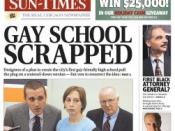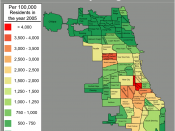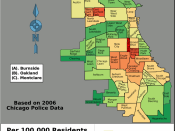The crime rate peaked in 1991 and have since shown a third major shift. Crimes have not changed even Through the many eras's, but have had rising and falling statistics. Post 21st Century, surveys done do fit with Multi-year statistics that show a steady decline in crime during the late 1990s, adding to hopes that stepped- up enforcement, Neighborhood Watch programs, community policing and added police on the streets has put a considerable dent in breaches of the peace. National results provided by the BJS were reflected here in the Midwest, where such crimes declined by 14.4 percent and the lowest in two decades. It was the greatest one-year decline in reported violent crimes since surveys was initiated in 1973. The violent crime rate began falling in 1994, and the decline in the property crime rate extends back to 1974, the statistics bureau said. The levels of crime are rated at all time lows for the first time in more then a century and even a decade, as stated in an article in the Chicago Sun Times article dated April 6th, 2001.
With the growing population of most south suburb communities, they have seen a tremendous increase in murder crimes. Joliet and Chicago Heights are the two largest. Joliet's 13 murders in 2000 represented only half as many murders per capita as Chicago, and a third as many per person as Chicago Heights. The murder rate is much lower in the towns we are located in, unfortunately not as low as the largest city in which we are located closest to by two to one and three to one in close by communities.
Some interesting statistics show that sixteen percent of hate crimes were due to religious bias and even more shockingly, fifty-two percent were caused by racial hatred in...


